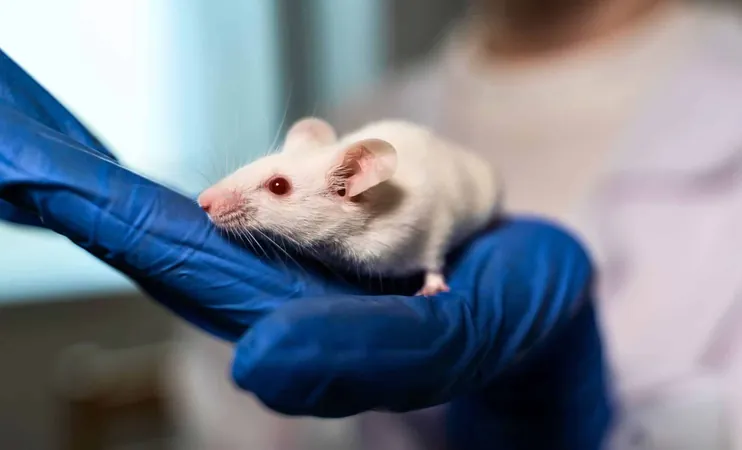
40,000-Year-Old DNA from Neanderthals Shatters Expectations in Mice: Here's What Scientists Discovered
2025-05-27
Author: Jia
A Groundbreaking Genetic Experiment
In a daring experiment at a Kyoto laboratory, scientists have injected mice with genetic material from our ancient relatives, the Neanderthals and Denisovans. Using cutting-edge CRISPR technology, researchers tweaked the mice's DNA to incorporate a specific variant of the GLI3 gene, a critical element in bone and organ development, which these ancient hominins once possessed.
Unexpected Transformations in Living Rodents
Published in the journal BioRxiv, the study spearheaded by Dr. Ako Agata and Dr. Tadashi Nomura revealed astonishing changes in the mice. These creatures, raised in controlled environments, began exhibiting physical traits reminiscent of Neanderthals, including broader rib cages and elongated skulls—characteristics that have puzzled anthropologists for millennia.
From Gene Variant to Dramatic Changes
The GLI3 gene, modified to include the R1537C mutation found in Neanderthals, was shown to subtly alter developmental pathways. Unlike results from complete disruptions of the gene, which often result in extreme conditions like polydactyly, this ancient variant maintained vital functions while steering physical traits into new evolutionary territories.
The Ancient Mutation Still Exists Today
Interestingly, the R1537C variant isn't just a relic of the past; it still exists in about 3.7% to 7.7% of modern European populations and as low as 0.8% in some African populations. This mutation resides in a part of the GLI3 gene associated with gene expression regulating processes crucial to bone growth, hinting at connections between our ancient ancestors and modern humans.
Fascinating Implications for Evolutionary Biology
Not merely a laboratory curiosity, this research suggests that traits shaped by ancient genetics could still influence contemporary human biology. The findings imply that Neanderthals may have had a different relationship with genetic mutations than modern humans, with some traits being selected for rather than against. This could explain the persistent genetic echoes we see in today’s DNA.
A Scientific Leap into Our Past
The experiment, conducted under ethical guidelines, used state-of-the-art CRISPR-Cas12a technology to implant embryos into surrogate mice. With data including RNA sequencing and imaging now available for public examination, the research opens new doors to understanding how remnants of ancient genomes are still active in shaping our species.
Exploring the Ancestral Connections
While the study doesn’t draw definitive conclusions about the role of this mutation in Neanderthals, it certainly shines a light on the intricate web of genetic connections we share with our extinct relatives. The investigation into how these variants may have influenced traits related to anatomy and even health could revolutionize our understanding of human evolution.
This study marks a significant advancement in genetic research, showing just how much our ancient past continues to resonate in the present, emphasizing that the legacy of Neanderthals is more alive than ever.




 Brasil (PT)
Brasil (PT)
 Canada (EN)
Canada (EN)
 Chile (ES)
Chile (ES)
 Česko (CS)
Česko (CS)
 대한민국 (KO)
대한민국 (KO)
 España (ES)
España (ES)
 France (FR)
France (FR)
 Hong Kong (EN)
Hong Kong (EN)
 Italia (IT)
Italia (IT)
 日本 (JA)
日本 (JA)
 Magyarország (HU)
Magyarország (HU)
 Norge (NO)
Norge (NO)
 Polska (PL)
Polska (PL)
 Schweiz (DE)
Schweiz (DE)
 Singapore (EN)
Singapore (EN)
 Sverige (SV)
Sverige (SV)
 Suomi (FI)
Suomi (FI)
 Türkiye (TR)
Türkiye (TR)
 الإمارات العربية المتحدة (AR)
الإمارات العربية المتحدة (AR)